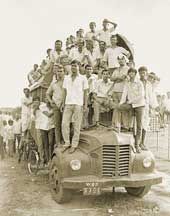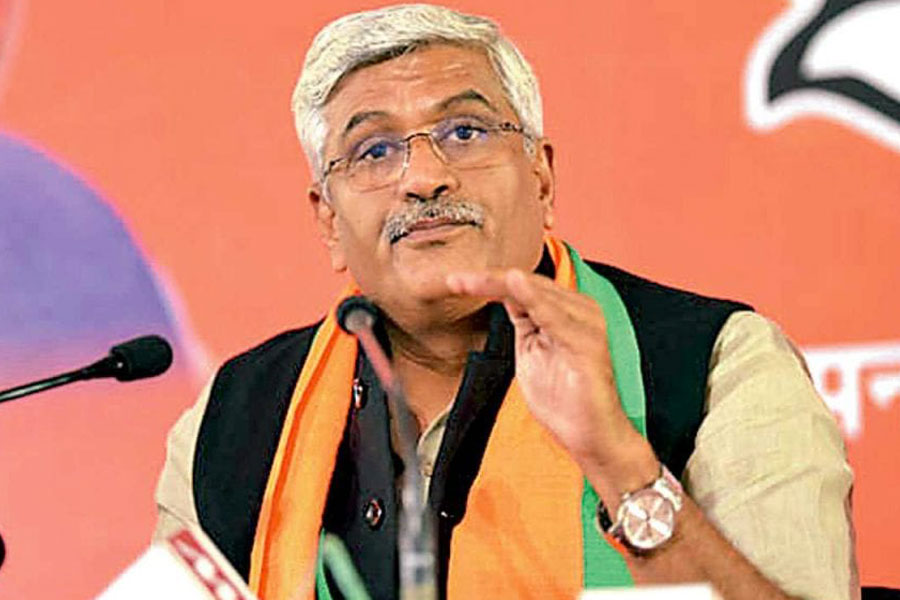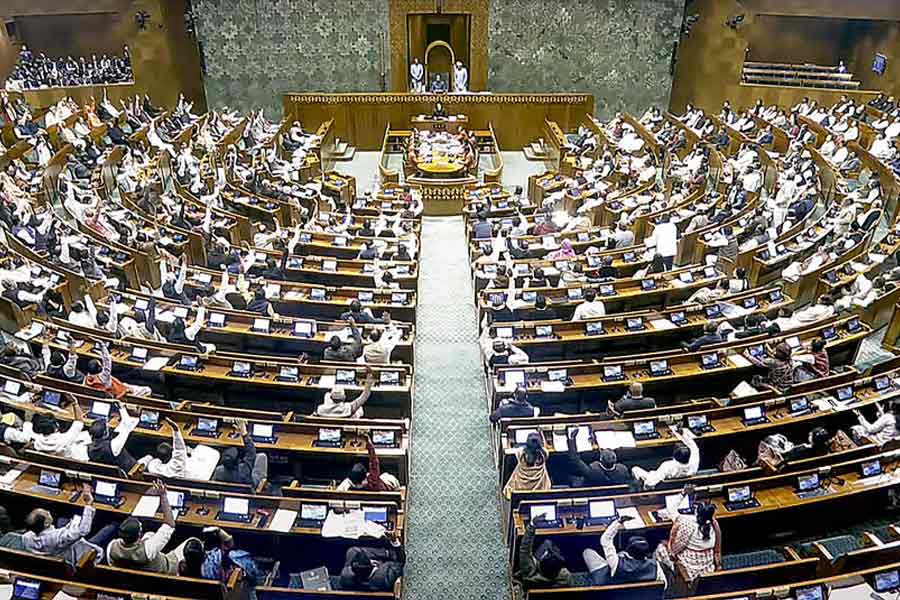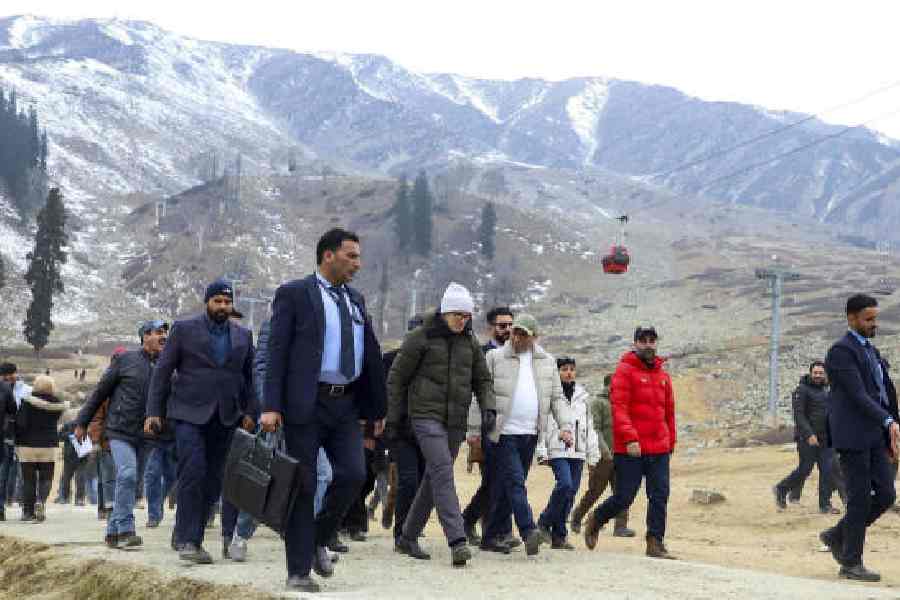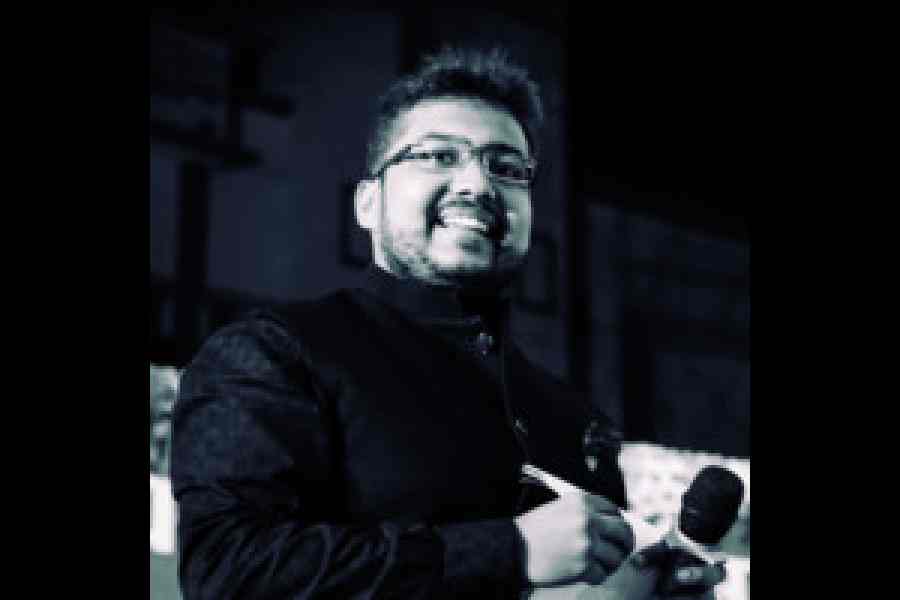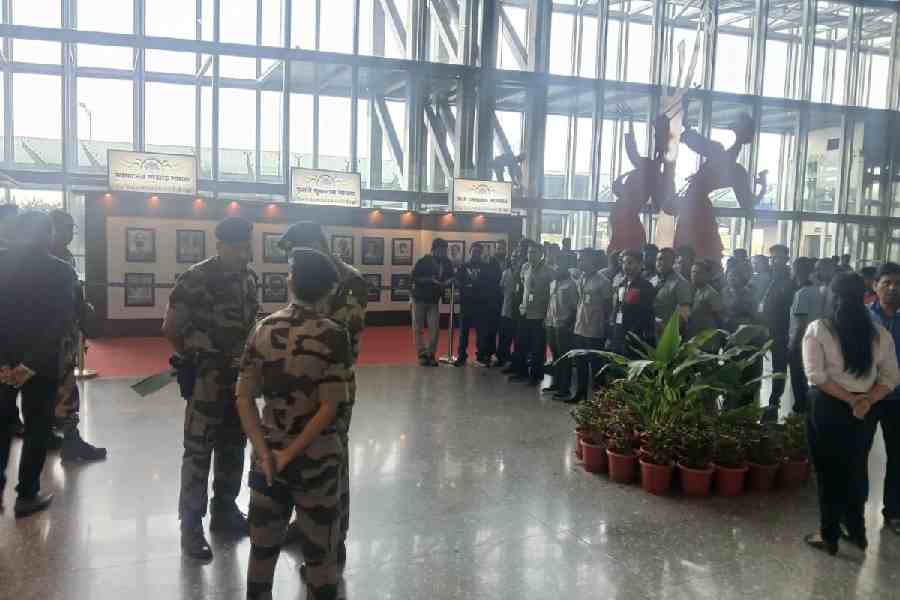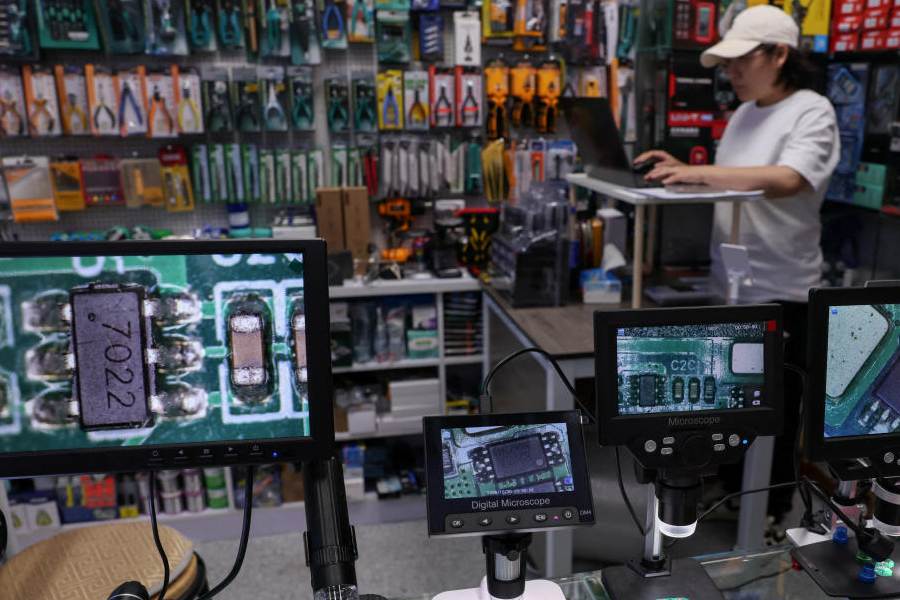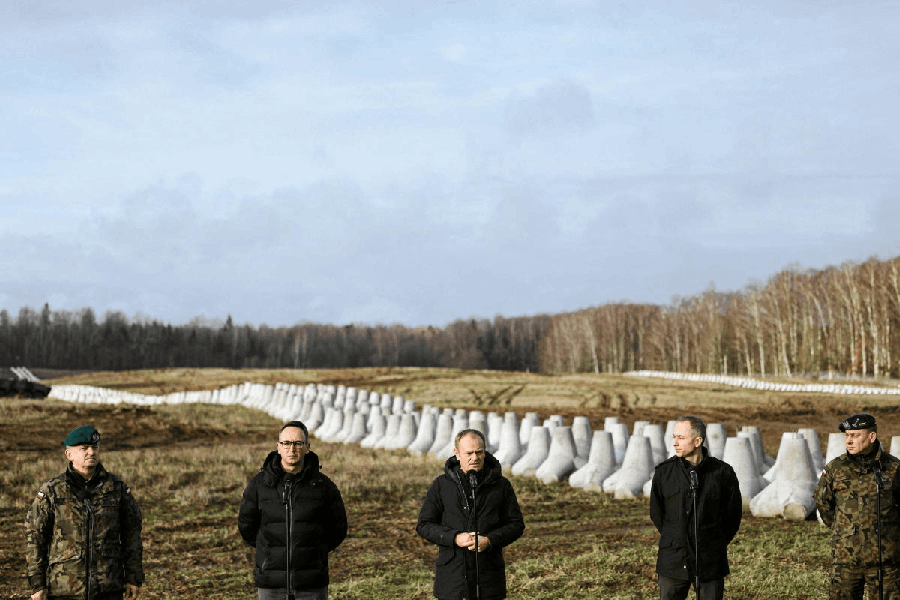 |
 |
| A human pyramid of football-lovers atop a black maria. (Below): A tram ride |
Going for a look at veteran photographer Arun Ganguly’s black-and-white stills in an old photographic studio is an experience in itself. It is on the second floor of the College Street Coffee House building and the scent of cutlets being fried greets one’s nostrils as one climbs the stairs.
Boi-Chitra, the room of C. Guha Studio in which the photographs are exhibited, is lined with books. Antique photographic equipment is displayed in it, too. It is ideal for showing Ganguly’s works, for they are about a Calcutta that is on its way out.
In a 1974 photograph, people hang from the windows of a tram, a mode of transport that is all but dead, thanks to the administration’s neglect. A crowd of football aficionados in 1972 forms a human pyramid as they stand on a black maria to catch a glimpse of a match. A brass band in Harrison Road begins to play while a teenager mimics a saxophonist. Lord Satyanarayan in a vintage Rolls-Royce rolls down a crowded street as a toothless man wearing a topi looks straight into the camera. A white horse is being walked back to the stable by its syce down the road in front of the Indian Museum – it is impossible to do this now as a flyover has come up there.
Apart from these vignettes, the exhibition affords a rare glimpse of how Calcutta culture has undergone a sea change. A dhoti-clad man wearing a topi, perhaps a poet, declaims or recites a poem in the middle of the Maidan as his companions hang on every word he says. This was shot way back in 1971 and this is a scene not likely to recur today. The book fair may draw huge crowds today, but that is hardly any measure of the city’s intellectual life. We all know what draws the crowds.
But young political activists trying to persuade passersby to buy their pamphlets are still a familiar sight in this city. So are street children.
There are three particularly memorable shots. A Sikh woman looks upwards as she offers prayers before entering a gurdwara. Another woman wears a bindi as she admires herself in a mirror in a gold ornaments shop. A gold necklace snakes across the frame — a reflection caught in a reflection. Wonder what Plato would have had to say about that.
The most touching yet sharp image is that of some blind boys leading each other in a special school. Their leader’s retina is clouded over. But that does not seem to matter to him. His mind’s eye is clear enough.

